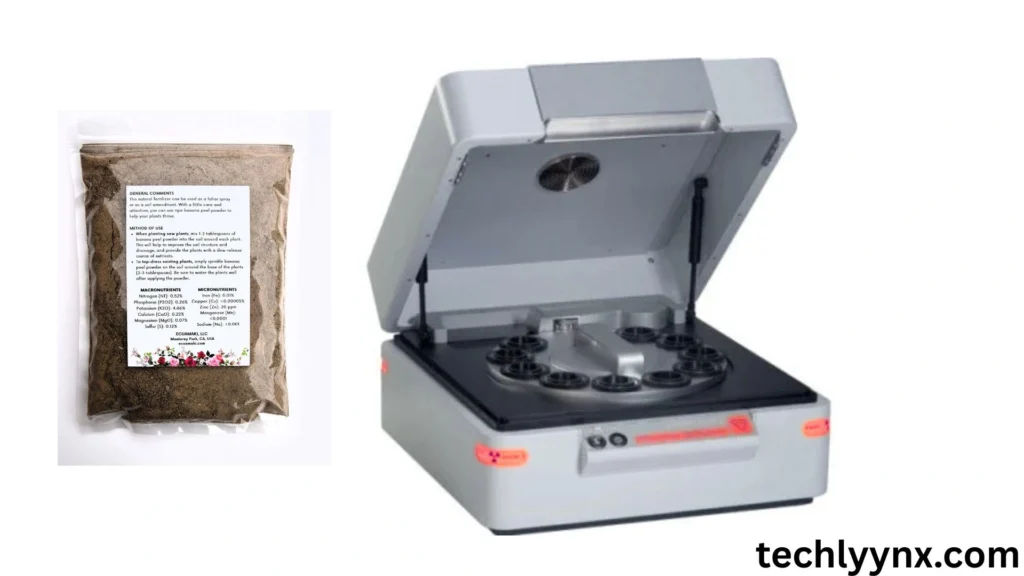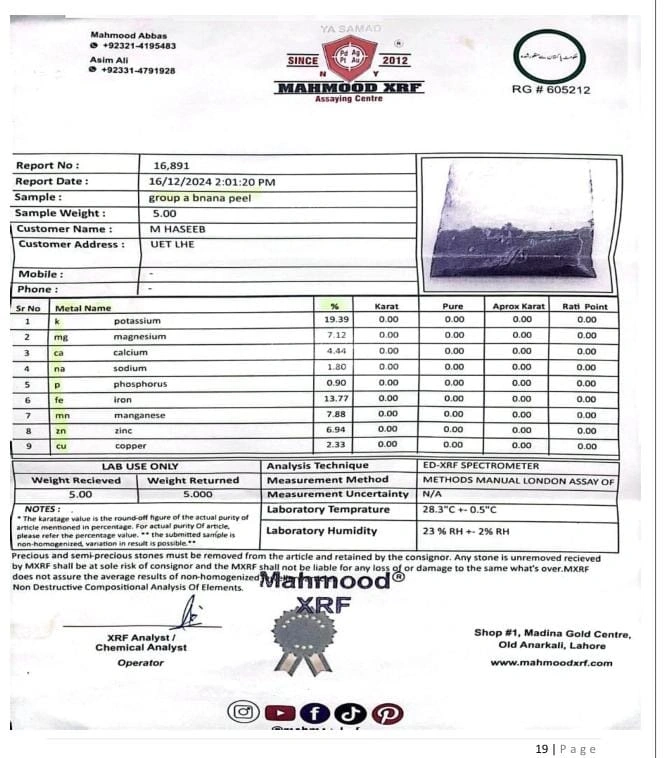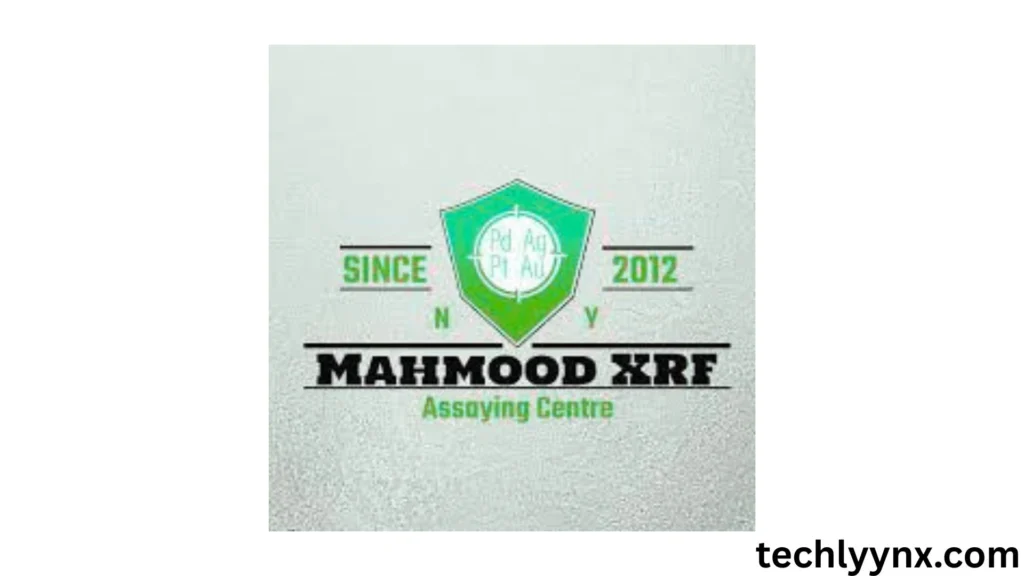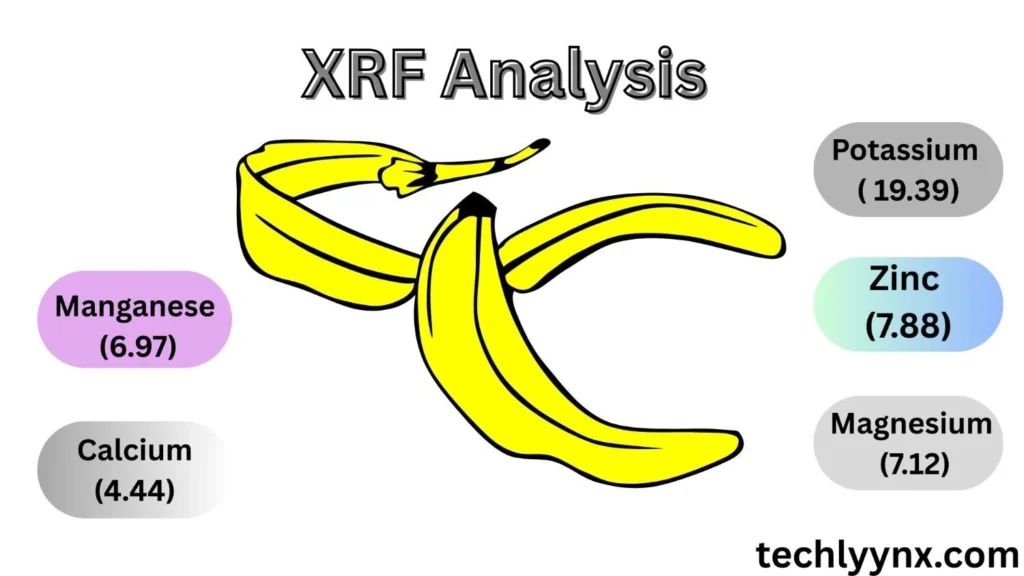In our daily life we mostly hear about foods/vegetables or other natural products that are rich in nutrition. They consist of several important metals like calcium, magnesium, potassium, sodium, iron, copper, manganese, and phosphorus. But here is an important question. Have you ever thought about how we determine what this product contains? What types of metals can we find in it? If not, then come and try to make sure that you have enough knowledge of this. Here comes the most important test in chemical engineering: that’s the X-ray fluorescence, or XRF analysis.
Banana Peel Proximate Analysis: What we found?
In this post we will learn what XRF analysis is. How is this performed, and what is its importance in chemical engineering?
Introduction to XRF Analysis
XRF analysis is a great and well-known technique used to determine the elements present in a material. This is very important, especially in this era in which everyone is moving towards a sustainable and secure lifestyle. The findings of the test indicate the presence of various inorganic elements having applications in agriculture, health, science, and other industrial processes.
XRF Analysis Principle
The phenomenon through which XRF analysis takes place is really interesting.
- First of all, a beam of x-rays is directed to the sample; the atoms of the material absorb the energy of the rays.
- As a result of this, the atoms in the outermost shells of the electrons get excited and eject.
- When electrons from higher shells fall into lower energy shells, they emit secondary (fluorescent) X-rays.
The energy of these x-rays is the characteristic of these elements. Through this process we come to know about the complete information about its elements.
Apparatus:

The following apparatus we used in the experiment of XRF analysis:
- Sample material
- X-ray source
- ED-XRF Spectrometer
- Weight Balance
Procedure of XRF Analysis:
- First of all, we have to prepare the sample for XRF analysis. The sample should be in homogenized powder form.
- Sometimes we have to make pellets of powdered material, but this is only the case when this is required by the spectrometer input type.
- Then we set up the equipment. Check all the connections. Make sure everything is working well.
- Adjust the temperature and humidity of your lab as required by the experiment.
- Perform the analysis.
- Observe the outcomes.
Results:

The XRF analysis indicated the presence of many micro- and macro-elements present in our banana peel sample.
Some of the main components of that are:
Potassium ( 19.39)
The potassium is not present as a separate substance. It is present as an ion (K+) in the tissues of the plant. It helps in enzyme activation and cell functions.
Iron (0.10)
Iron is found in trace amounts, usually bound to organic molecules. This is important for chlorophyll synthesis.
Magnesium (7.12)
Calcium (4.44)
Calcium is present in banana peel as its salts, like calcium oxalate. It is stored within cell walls and structures. Iron gives structural support to the plant and its fruit.
Manganese (6.97)
Zinc (7.88)
Copper (2.33)
Other tracing elements like sodium and phosphorus
Benefits of XRF Analysis
There are a lot of benefits to using XRF analysis:
Non-destructive: The most important thing to note is that this is a non-destructive technique. The XRF analysis does not alter the composition or nature of your material. The sample will remain the same as it was before the analysis.
Accurate and Rapid:
This technique is sometimes used just because of its accuracy. The accuracy is to the extent that even 0.01 g of your sample will not be lost. Immediate response: you can collect the results even after some minutes.
Minimal sample preparation:
Some tests need a special type of material nature. But the XRF analysis just claims the sample is in simple powder form. Not any other pretreatment.
This analysis can detect a very huge range of elements (from sodium to uranium). The elements having a very small portion of less than 0.5 are visible.
Limitations
Everything has some pros and cons; it’s similar here.
This analysis faces some limitations also.
- The XRF analysis is less sensitive for lighter elements like hydrogen, carbon, and oxygen. In most of the cases these types of elements are not indicated.
- For accurate quantity measurements, it is crucial to have proper calibration of the equipment. This helps in determining exact quantitative results.
- Sample homogeneity is always an affecting factor. If your sample is heterogeneous, then you will face errors in your results; the results will be suspicious. So focus on grinding and adjust the sieving section in a way to get a fully homogenized mixture to get the most accurate results.
Where the XRF analysis was performed?

The XRF analysis for our banana peel research sample was performed at
Mahmood Xrf (Assaying Center).
In fact, our chemical engineering laboratory at the university of engineering and technology was not enough to handle all the tests. As the students had to perform the analysis just at the same time and there was also a deadline for results submission, we decided to get the analysis from the outside laboratory.
One of the students collected all the samples and took them to the Mahmood XRF analysis center at Lahore Market. We received the results only two days later.
Conclusion
Here is the sum-up of all of the above discussion. The XRF analysis is performed. We learned techniques of XRF analysis and its importance as well as limitations. We got some amazing and shocking results as well at the end.
At the end we found that potassium is the most abundant element present in banana peel, with a percentage of 19.39%. The second one is the ZIC with a value of 7.88%. The magnesium is also an important part of the composition, with an overall value of 7.12%. Other tracing elements consist of calcium, phosphorus, sodium, and iron.
Note!
This experiment and its findings are totally dependent on our technique and method. The preparation of material and the methods of performance may change. We don’t claim 100% accuracy of these results. Errors and omissions are accepted. Kindly contact us in the case of any inconvenience or recommendation.

